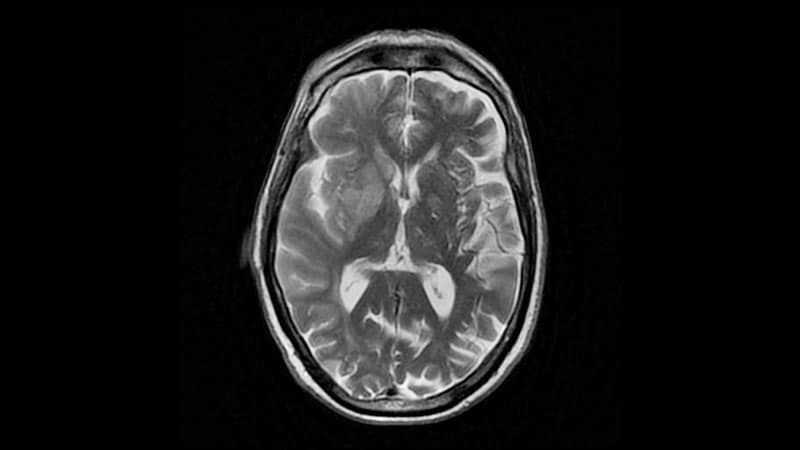The bolus thrombolytic, tenecteplase, was non-inferior to alteplase, which is given by a bolus followed by an infusion, for functional outcomes in acute ischemic stroke patients treated within 4½ hours of symptom onset in the ATTEST-2 randomized clinical trial.
The results were presented by Keith Muir, MBChB, consultant neurologist, University of Glasgow, UK, at the World Stroke Conference 2023, held last week in Toronto — and they were greeted by applause from the audience.
“This result adds to the growing evidence that tenecteplase should be a first-line thrombolytic agent for the treatment of suitable acute ischemic stroke patients and has significant advantages over current treatment in its ease of use,” Muir concluded.
Commenting on the study for theheart.org | Medscape Cardiology, Raul Nogueira, MD, professor of neurology & neurosurgery at the University of Pittsburgh School of Medicine, said: “ATTEST-2 adds to the body of evidence that confirms that tenecteplase is non-inferior and may be superior to alteplase. Even if superiority cannot be fully confirmed, the easy logistics and better cost profile of tenecteplase support its use.”
Nogueira added that the University of Pittsburgh health system “completely switched to tenecteplase over 2 years ago and we have seen improvements in time metrics, a better safety profile, and significant cost savings.”
In his presentation, Muir explained that while alteplase, which has been available for almost 30 years now, is clearly beneficial, it would be advantageous to be able to give a thrombolytic as a single bolus injection.
“The consequences of the complex administration of alteplase are potentially detrimental because stroke patients now move very quickly within hospitals and between hospitals, with the potential for dose errors, dose interruption, and delays,” he said.
Muir noted that there have been a number of previous randomized trials comparing alteplase with tenecteplase. These have included several small studies with different doses of tenecteplase, and the NOR-TEST trials that used a higher dose (0.4 mg/kg) and led to the conclusion that this dose was not safe compared with alteplase; two Chinese trials using a bio-copy molecule of uncertain equivalence, the TRACE trials; and “the most directly equivalent” trial — ACT — reported last year, which showed non-inferiority of tenecteplase 0.25 mg/kg to alteplase based on modified Rankin Scale (mRS) 0-1 as the main outcome.
The ATTEST-2 trial was started in 2017 and concluded this summer, with a pause in 2020 because of the pandemic. The current results are preliminary ones based on a snapshot of the database as of October 6, Muir reported.
“The final database lock will happen after we have finished tidying all of the adverse event data, but the outcomes with respect to the primary endpoint and analysis populations are now final,” he added.
The trial, which was conducted at 40 hospitals across the UK, had a simple pragmatic design, randomizing 1858 acute ischemic stroke patients eligible for thrombolysis within 4½ hours of last known well time to the standard dose of alteplase, 0.9 mg/kg given by bolus (10%) followed by infusion (90%), or a bolus dose of tenecteplase (0.25 mg/kg).
The primary outcome was mRS distribution at day 90, and the trial had a hierarchical analysis, looking for non-inferiority and then superiority. The primary endpoint — the mRS distribution at day 90 — showed that non-inferiority was met.
“For all mRS scores other than 0 there is a trend in favor of tenecteplase,” Muir reported. The results translated into an adjusted common odds ratio of 1.07 in favor of tenecteplase (95% CI, 0.90 – 1.27). But tenecteplase did not fulfill statistical criteria for superiority over alteplase.
The secondary outcome of the number of patients achieving mRS 0-1 (excellent functional outcome) showed “a just under 2% absolute difference in favor of tenecteplase,” Muir noted.
The risk difference for this outcome was 1.99 (95% CI, –2.77 to 6.75). The odds ratio was 1.05 (95% CI, 0.85 – 1.30). This was significant for non-inferiority (P = .002), but not significant for superiority to alteplase (P = .415).
The number of patients achieving an mRS 0-2 (good functional outcome) showed a 3.4% absolute benefit in favor of tenecteplase. This was not tested for non-inferiority and again tenecteplase was not statistically superior to alteplase.
The risk difference was 3.41 (95% CI, –1.14 to 7.95) and the odds ratio was 1.15 (0.91 – 1.45); P for superiority = .143.
Early neurological recovery was similar in the two groups with a reduction in the NIH Stroke Scale score from admission to 24 hours of 3 points in both groups. In terms of safety, there were no significant differences between the two groups.
But Muir noted that there was a slight numerical reduction in mortality in the tenecteplase group despite slight numerical increases in intracranial and extracranial hemorrhage rates.
“These results broadly confirm the findings of the previous ACT trial and can be taken to strengthen the recommendation in favor of tenecteplase as the standard of care for thrombolysis,” Muir commented.
He went on to present a quick meta-analysis of tenecteplase vs alteplase studies, which hinted at an improved efficacy with the newer bolus agent.
Stressing that this should be regarded with some caution (as these are very different trials), Muir reported that the crude numbers suggested overall potential superiority of tenecteplase on some of the mRS outcomes.
He added that a more accurate individual patient meta-analysis is planned involving all the data from the different studies, which would allow proper adjustment for the different designs of the various clinical trials.
The ATTEST-2 trial was funded by the British Heart Foundation and UK Stroke Association.
World Stroke Conference 2023. Presented October 11, 2023.
For more from theheart.org | Medscape Cardiology, join us on X (formerly Twitter) and Facebook
Source: Read Full Article



